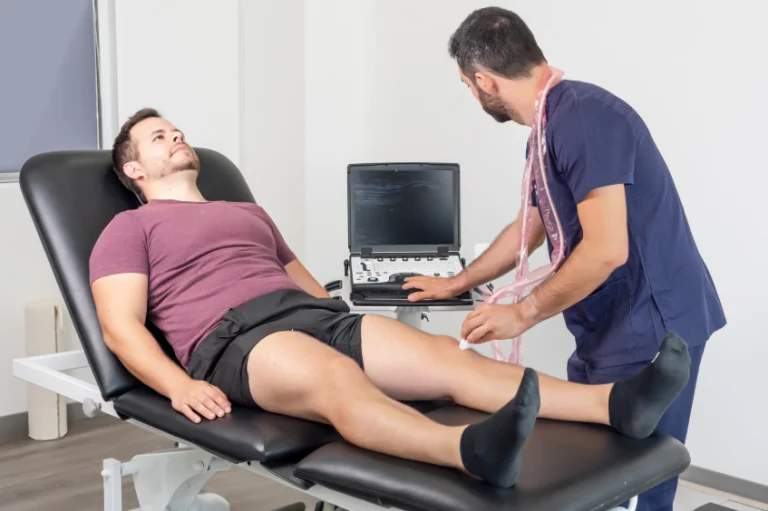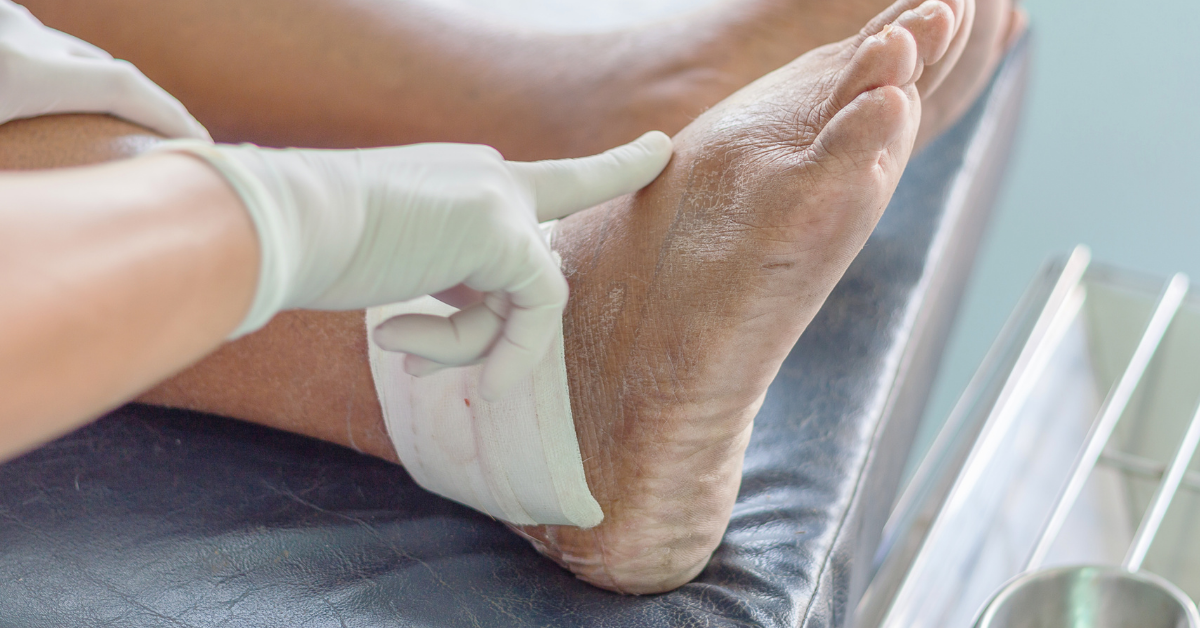Knee injuries are some of the most common problems faced by athletes, fitness enthusiasts, and active individuals. From meniscus tears to ligament strains, these injuries can cause significant pain and limit mobility, impacting both everyday activities and athletic performance. Accurate diagnosis and timely treatment are crucial to recovery, which is where knee injury ultrasound imaging comes into play.
Ultrasound imaging, particularly Musculoskeletal Ultrasound Imaging (MSK), has become a game-changer in diagnosing and treating knee injuries. This non-invasive, real-time diagnostic tool is providing clearer, more detailed insights into soft tissues and joints, allowing for better-informed treatment plans.
What is Knee Injury Ultrasound Imaging?
Knee injury ultrasound imaging is a diagnostic tool that uses high-frequency sound waves to create detailed, real-time images of the soft tissues, muscles, tendons, and ligaments surrounding the knee joint. Unlike traditional imaging methods like X-rays and MRIs, ultrasound is non-invasive, meaning it doesn’t require injections or contrast dyes, making it a safer option for patients.
How it Works: During the procedure, a gel is applied to the knee, and a small probe is moved over the skin. The probe emits sound waves that bounce off tissues in the knee, creating images that are displayed on a monitor. This dynamic process allows healthcare providers to see how the knee moves, providing a comprehensive view of the injury.
Why Choose Ultrasound Imaging for Knee Injuries?
Real-Time Dynamic Imaging: One of the standout features of knee ultrasound imaging is its ability to provide real-time, dynamic visuals. This means that doctors and physical therapists can see how the knee moves during the examination, giving them a better understanding of the injury. For example, a torn ligament or tendon can be seen in action, allowing for a more accurate diagnosis and treatment plan.
Accurate Diagnosis of Knee Injuries: Ultrasound imaging can help identify a variety of knee injuries, including ligament tears, meniscus damage, tendonitis, and more. Its precision allows physical therapists to pinpoint the exact location and severity of the injury, which leads to more effective treatments. This reduces the risk of misdiagnosis, ensuring that the right treatment approach is chosen.
Non-Invasive and Safe: Unlike other imaging techniques such as MRIs, which may require the injection of contrast dyes or the use of radiation, ultrasound imaging is entirely non-invasive. Patients experience little to no discomfort, and the procedure takes only a few minutes. With no risk of radiation, ultrasound is a safer, patient-friendly option, especially for individuals with allergies or those who prefer to avoid invasive procedures.
Common Knee Injuries Diagnosed with Ultrasound Imaging
Meniscus Tears: One of the most common knee injuries that ultrasound can detect is meniscus tears. The meniscus, a piece of cartilage that cushions the knee joint, is vulnerable to tears due to trauma or wear-and-tear. MSK ultrasound can visualize the tear’s size and location, helping physical therapists develop a targeted treatment plan.
Ligament Injuries: Ligament injuries, such as ACL (anterior cruciate ligament) or MCL (medial collateral ligament) tears, are common in athletes. Ultrasound imaging provides a detailed view of these ligaments, enabling doctors to identify tears, strains, or sprains and determine their severity.
Patellar Tendinitis and Bursitis: Patellar tendinitis, also known as jumper’s knee, and bursitis (inflammation of the fluid-filled sacs around the knee) are common knee injuries in athletes. Ultrasound helps to detect tendon inflammation, fluid accumulation, and other soft tissue issues that are not visible through traditional X-rays.
Cartilage Damage: Ultrasound can also assess cartilage damage or degeneration within the knee. This is crucial for diagnosing issues like osteoarthritis, where the cartilage wears down and causes pain or stiffness in the joint.
How Ultrasound Imaging Enhances Treatment and Recovery
Guided Therapies: One of the major advantages of knee ultrasound imaging is its use in guided therapies. Once the injury is diagnosed, ultrasound can be used to guide treatments like injections, dry needling, or physical therapy. For instance, corticosteroid injections can be precisely directed to the affected area, improving treatment outcomes and reducing discomfort.
Monitoring Healing Progress: Ultrasound imaging doesn’t stop at diagnosis; it can also be used to monitor the progress of healing. With follow-up imaging, physical therapists can track the improvement of the injury over time, adjust the treatment plan as needed, and ensure a quicker recovery.
Improved Recovery Times: Thanks to its accuracy and real-time capabilities, ultrasound-guided therapies can speed up recovery. By delivering the right treatment to the right place, ultrasound imaging can help reduce inflammation, relieve pain, and allow athletes to return to their activities sooner.
How to Get Started with Knee Injury Ultrasound Imaging
If you’re experiencing knee pain or discomfort, the first step is to consult with a physical therapist or healthcare provider trained in musculoskeletal ultrasound imaging. Here’s how you can get started:
- Book an Appointment: Find a clinic or physical therapy center that offers ultrasound services.
- What to Expect: During the ultrasound, a gel will be applied to your knee, and a small probe will move over the area. The procedure is quick and painless.
- Post-Treatment Care: Based on the ultrasound results, your therapist will recommend a personalized treatment plan, which may include guided therapies or rehabilitation exercises.
Takeaway
Knee injury ultrasound imaging is an invaluable tool in the accurate diagnosis and effective treatment of knee injuries. By providing real-time, dynamic imaging, ultrasound offers a more precise, non-invasive alternative to traditional imaging methods. Whether you’re dealing with meniscus tears, ligament injuries, or tendonitis, ultrasound helps identify the root cause of the problem and guide treatment for faster recovery. If you’re dealing with knee pain, consider scheduling an ultrasound to get a detailed diagnosis and start your path toward recovery today!






